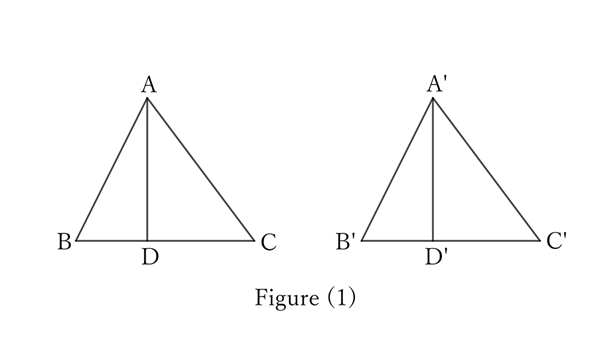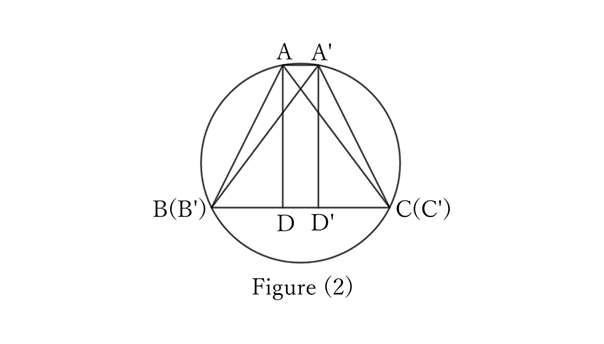Problem
$$ $$
$$ $$
$\downarrow$ $\downarrow$ $\downarrow$ $\downarrow$ $\downarrow$
$$ $$
$$ $$
$$ $$
$$ $$
$$ $$
$$ $$
$$ $$
$$ $$
$$ $$
$$ $$
Solution
For $△ABC$ and $△A’B’C’$, suppose that
$$BC=B’C’, \quad AD=A’D’ \quad and \quad ∠BAC=∠B’A’C’.$$
Then, place $B’$ on top of $B$, $C’$ on top of $C$, and put $A$ and $A’$ on the same side of $BC$.

As shown in Figure (1), if $A$ and $A’$ overlap,
$$△ABC≡△A’B’C’.$$

As shown in Figure (2), if $A$ and $A’$ do not overlap, then $AA’∥BC$ is clear because $AD=A’D’$ and $∠A=∠A’$.
Thus, $B, C, A$ and $A’$ are on the same circumference (circumferential angle theorem).
$$AB=A’C’,$$
$$AC=A’B’.$$
$$∴ \ △ABC≡△A’B’C’.$$
In both cases, the two triangles are congruent.
Reference
Teiichiro Sasabe (1976) The Encyclopedia of Geometry (2nd edition), Seikyo-Shinsha, p.10